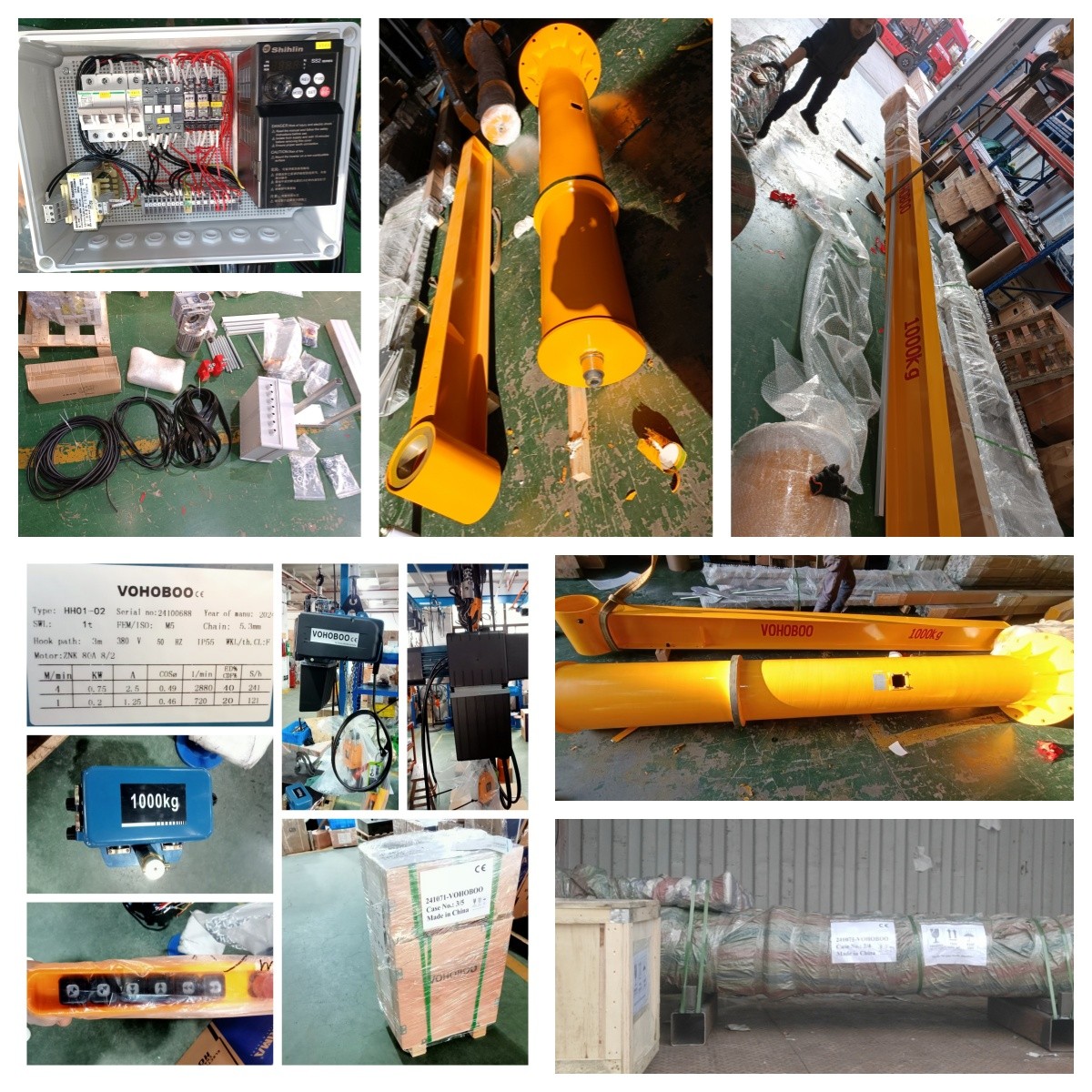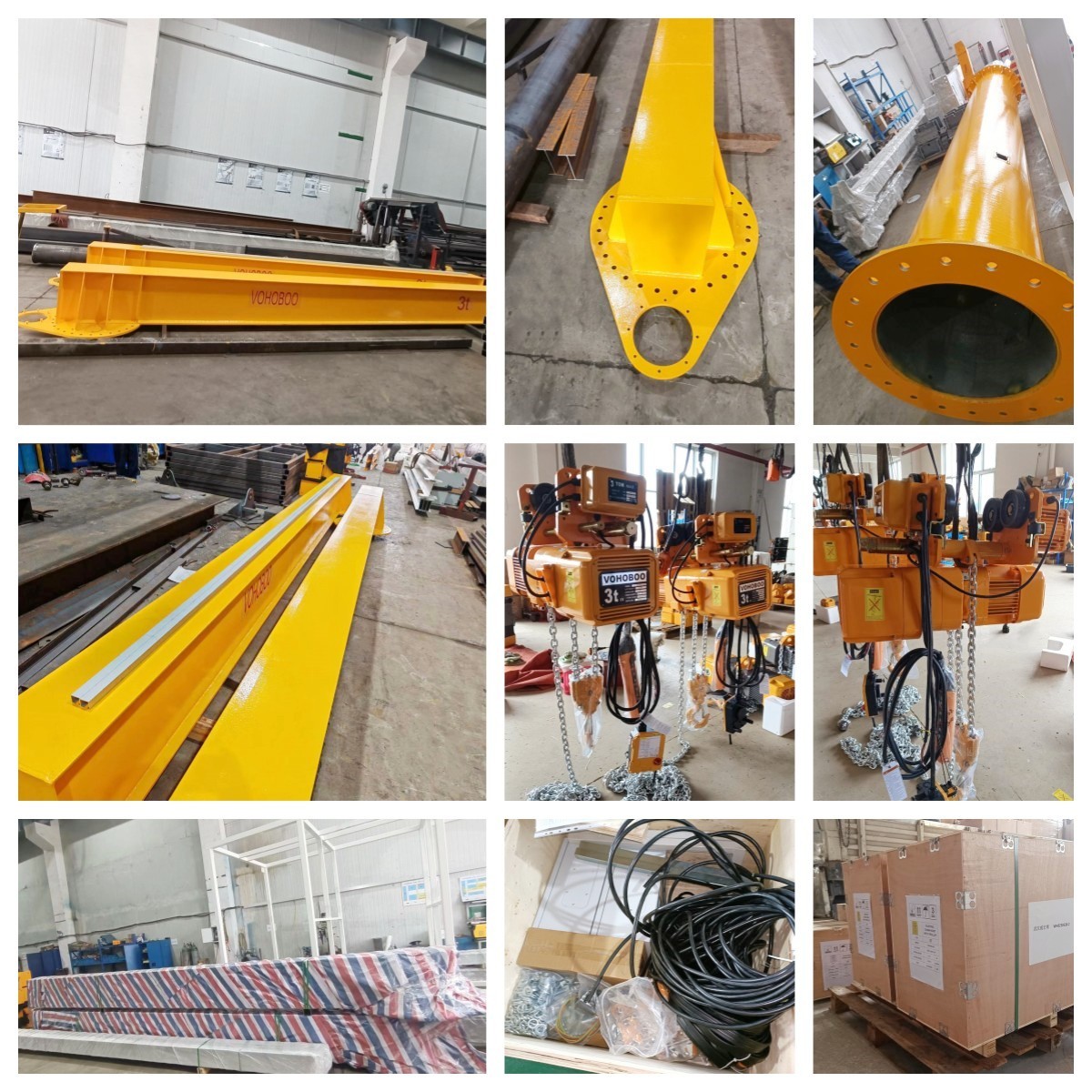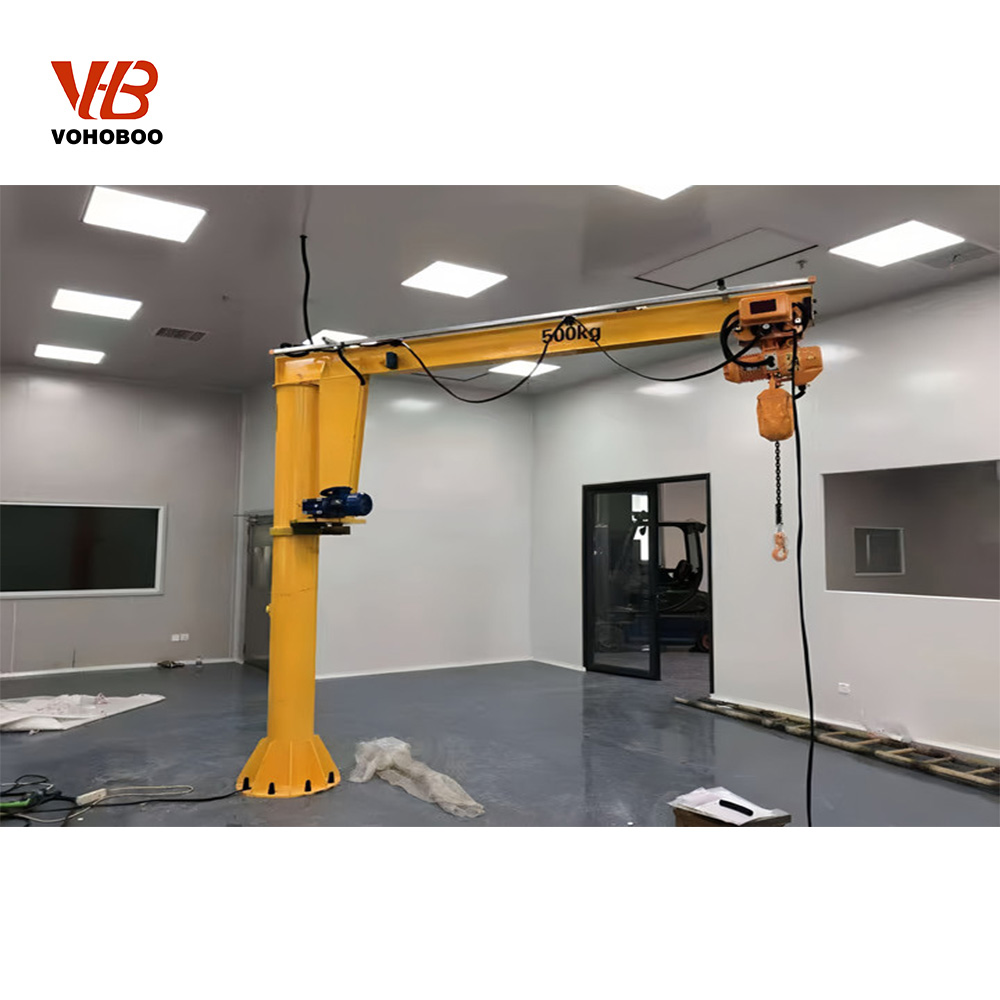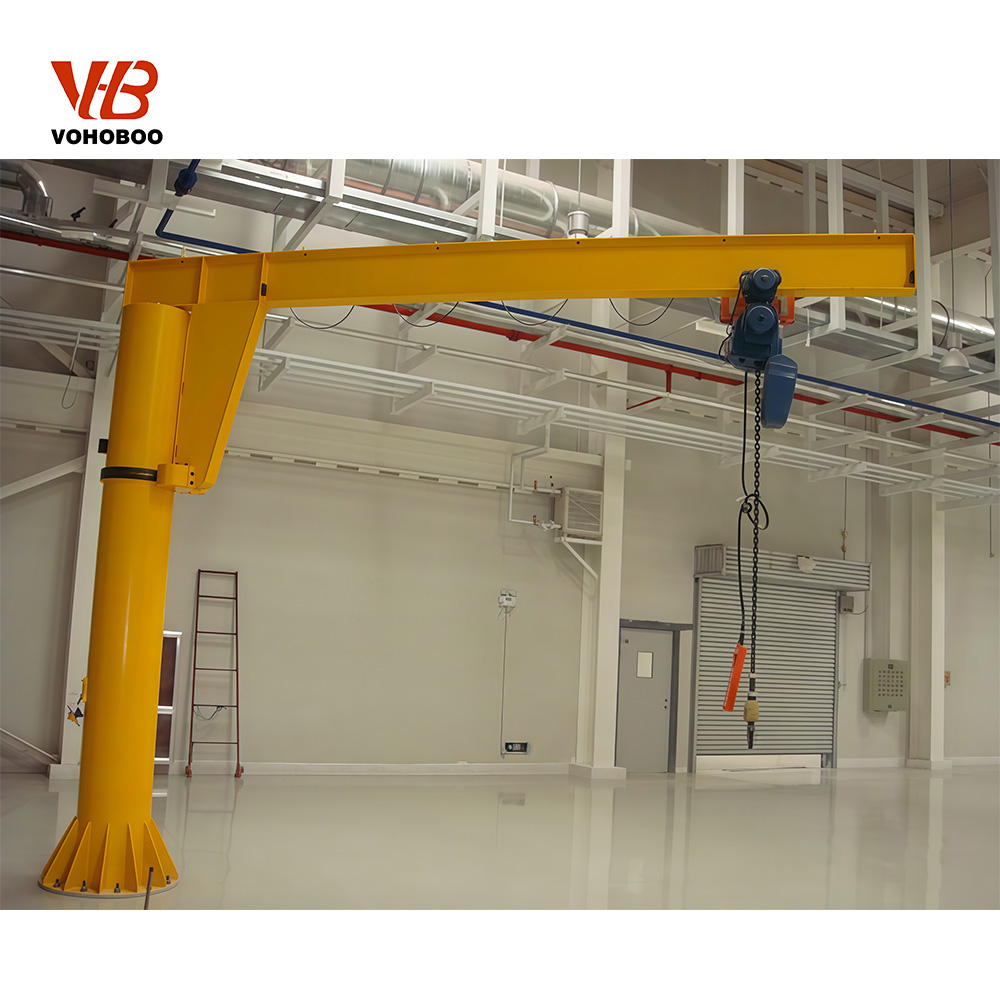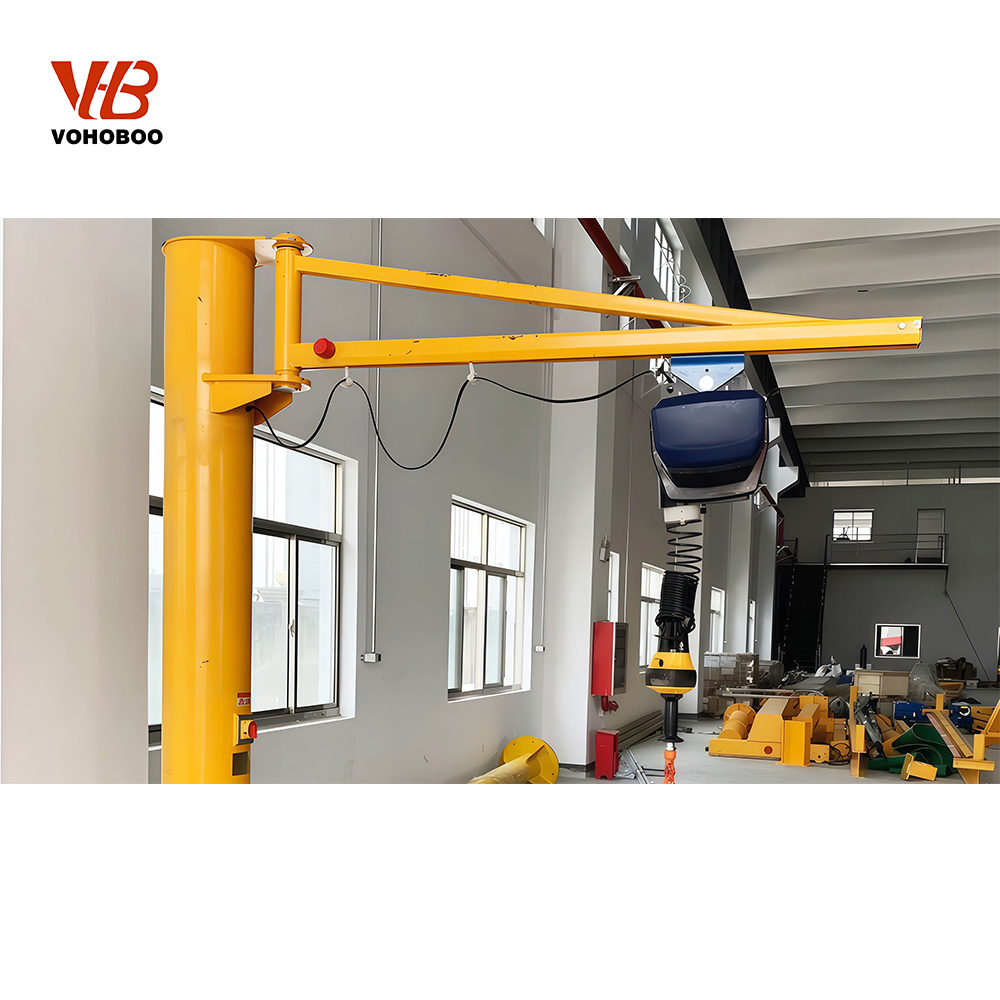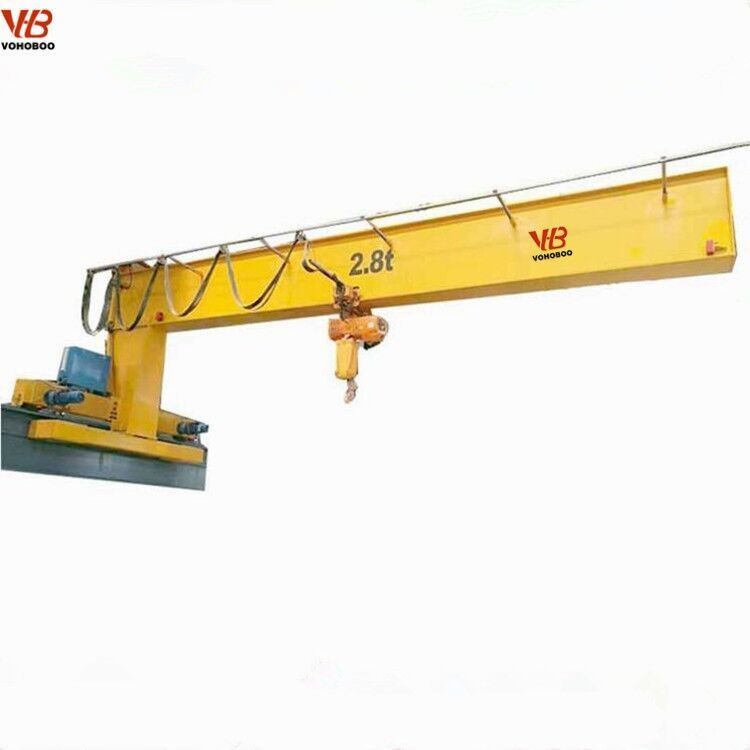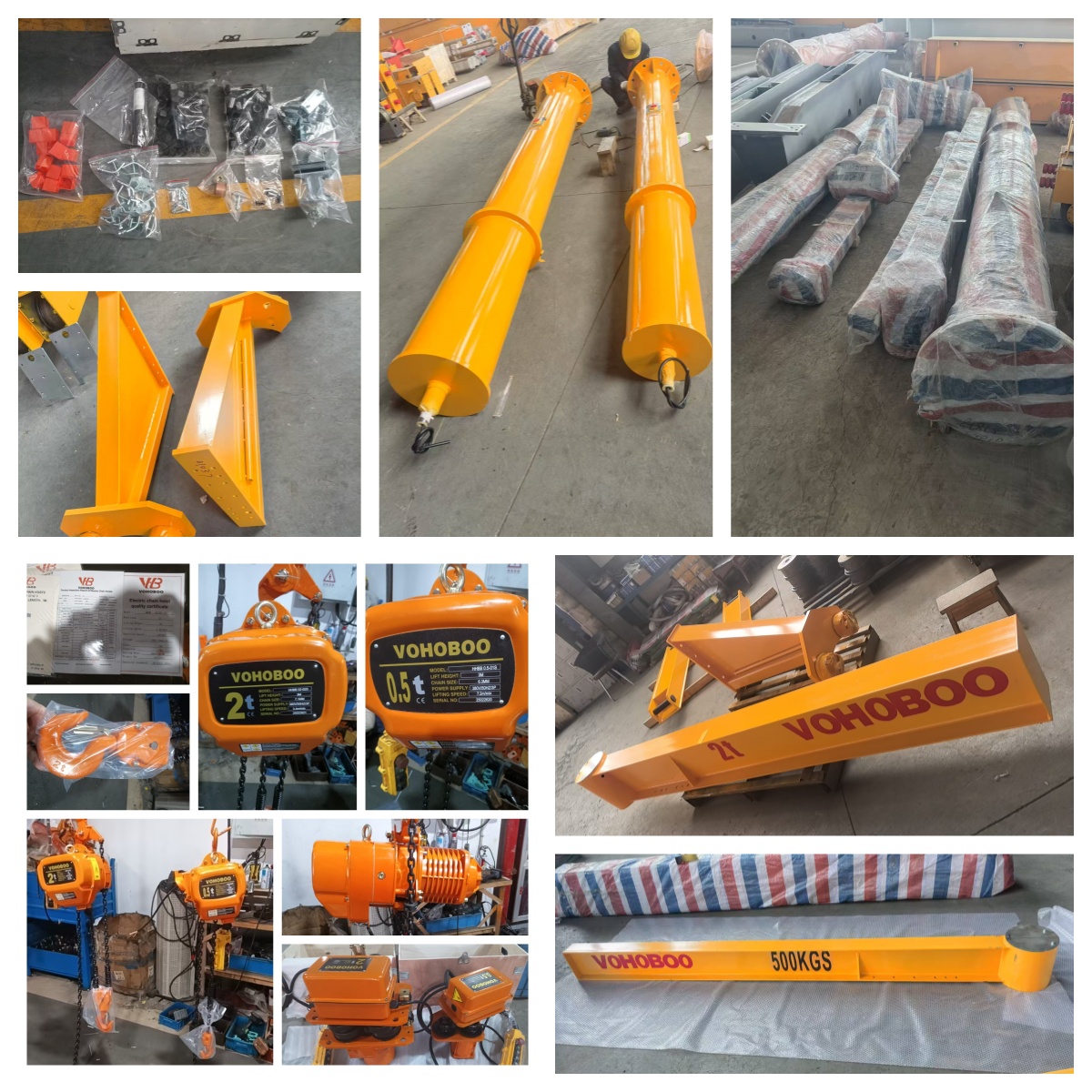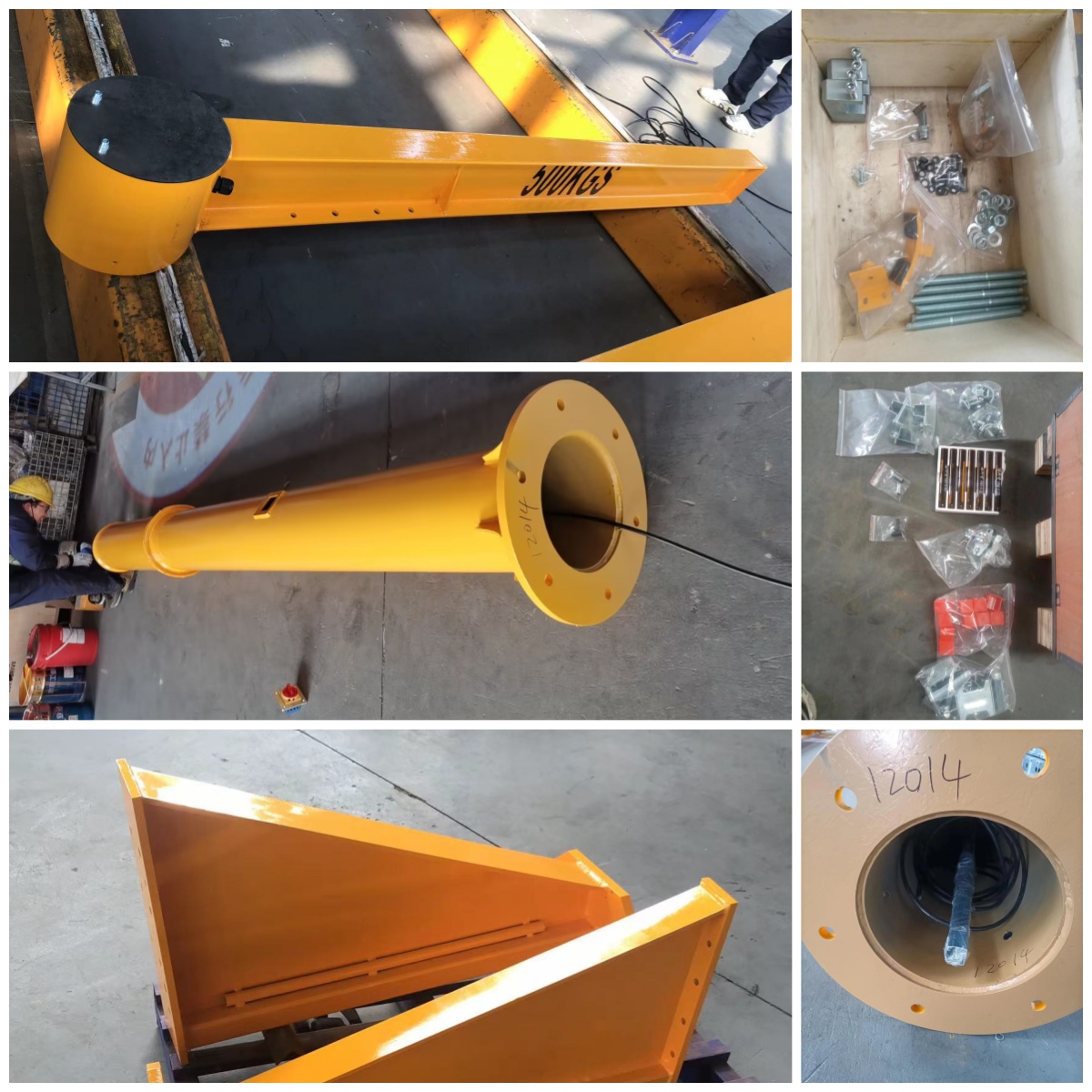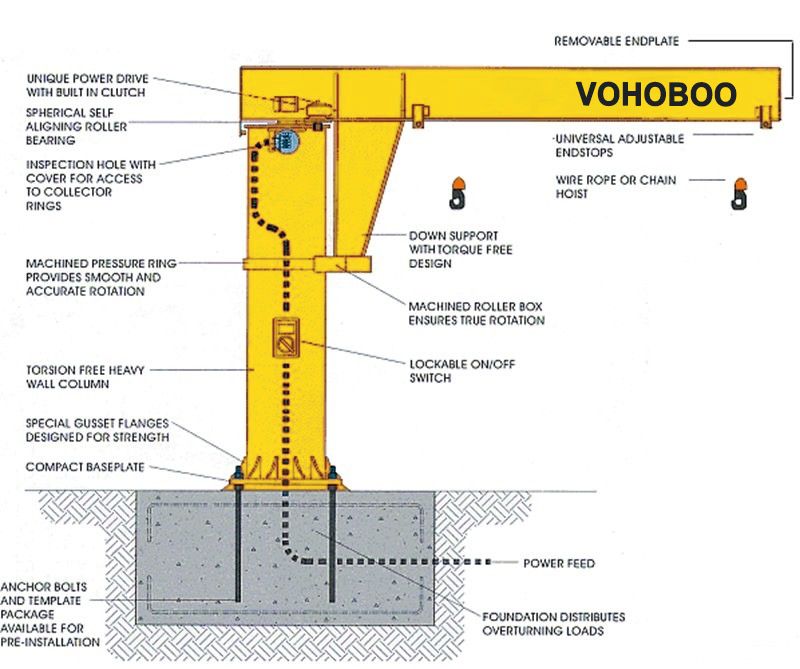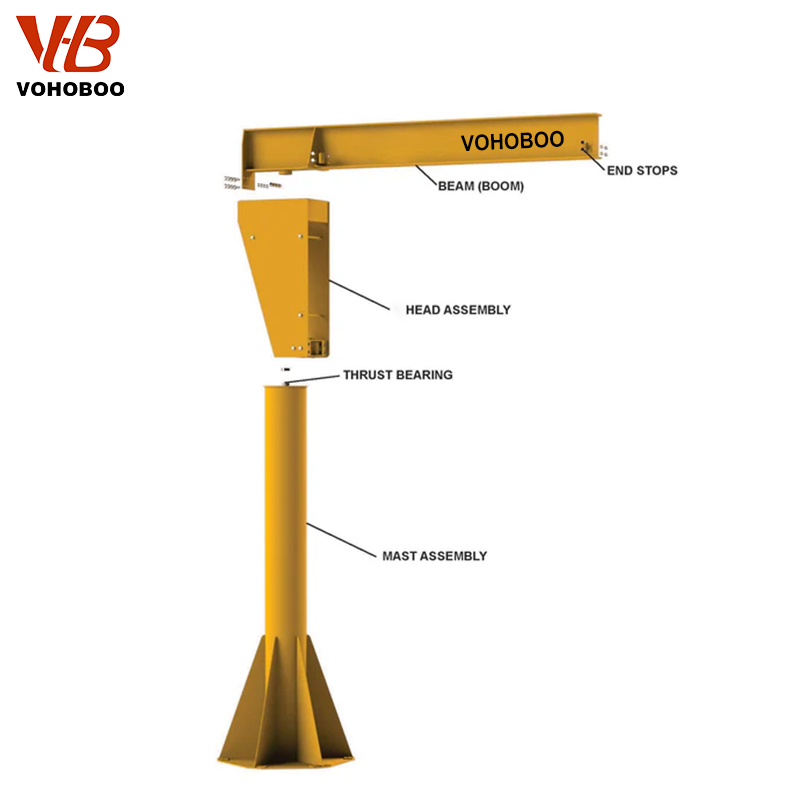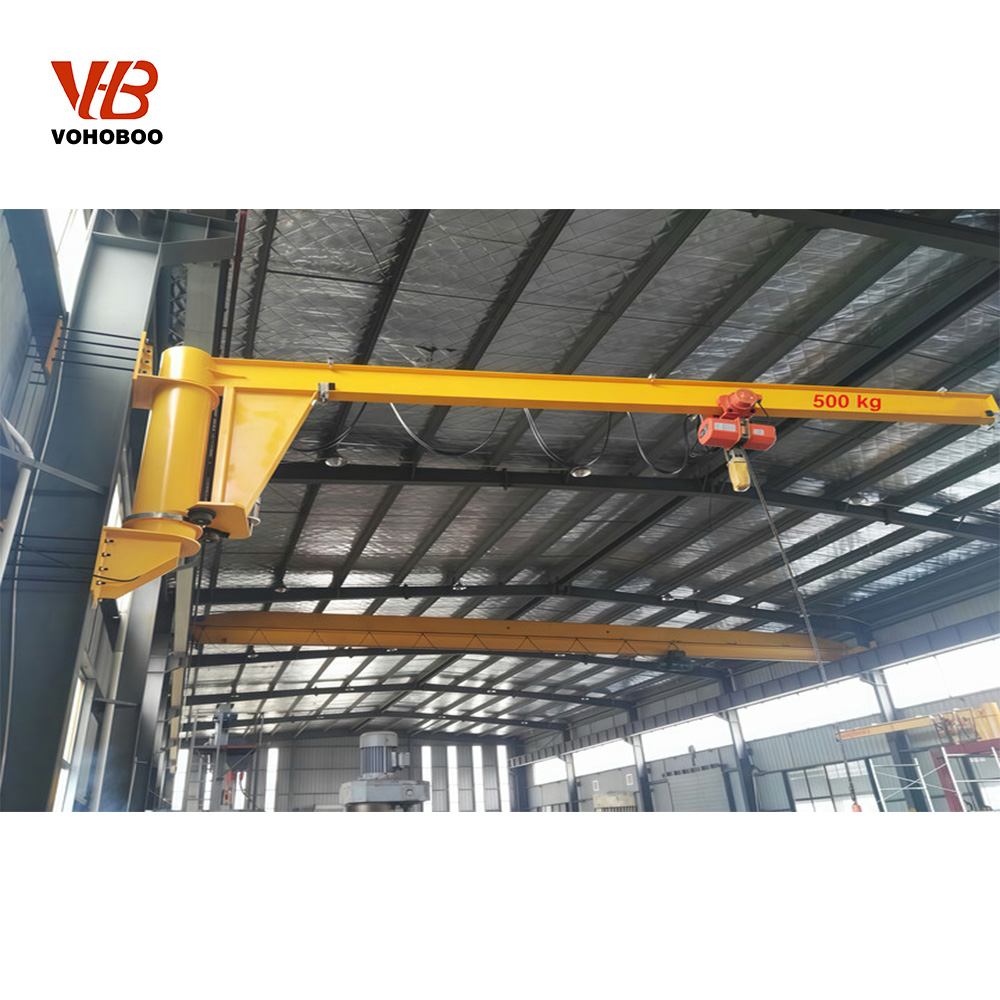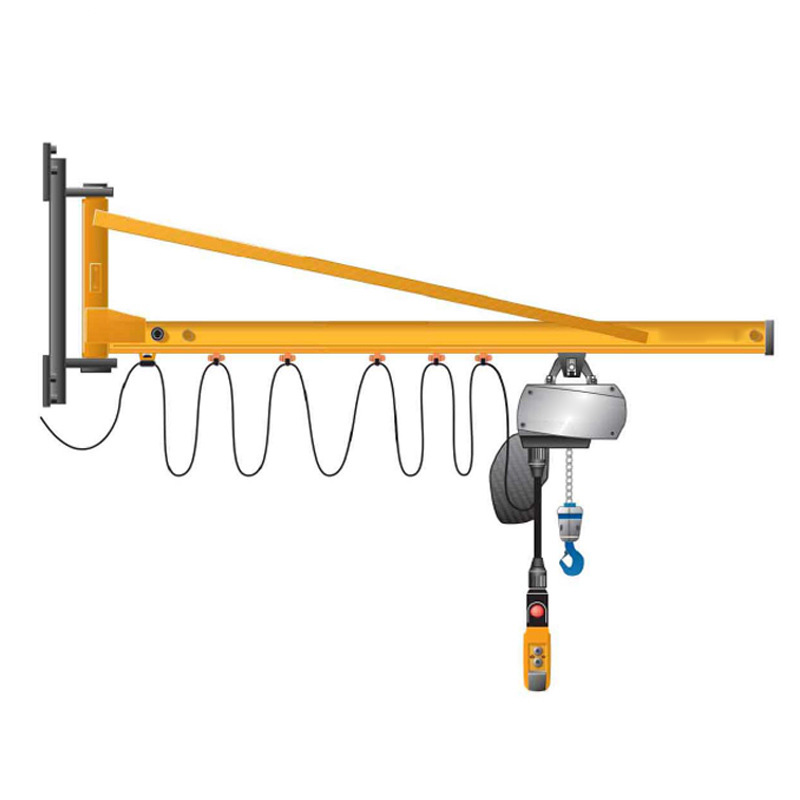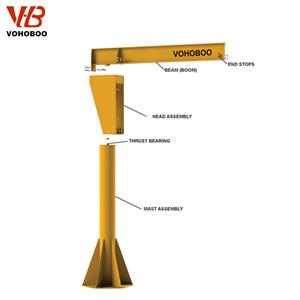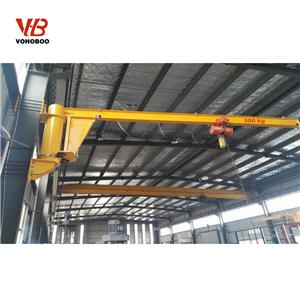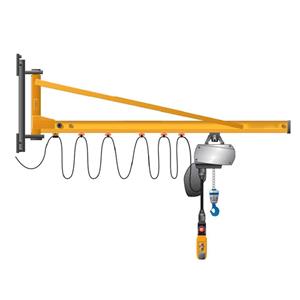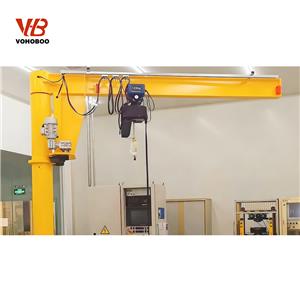Adjustable Height 1 Ton Jib Crane

- VOHOBOO
- Hubei, China (Mainland
- 2~4 weeks after your payment
- 2000 Set/Sets per Month gantry crane 1 ton
Comprehensive Overview of Jib Crane Features and Applications
A jib crane is a versatile and efficient lifting device designed to handle a wide range of material handling tasks in industrial, commercial, and construction environments. It consists of a horizontal arm, known as the jib or boom, that supports a hoist and is mounted to a vertical mast, wall, or other structural support. Jib cranes are widely recognized for their ability to provide localized lifting and movement capabilities without the need for large-scale overhead crane systems. Depending on the model, they can rotate from 180° to 360°, offering flexible and precise load positioning in confined or open spaces.
The typical load capacity of a jib crane ranges from 125 kg to 20 tons, making them suitable for both light-duty assembly work and heavy-duty industrial lifting. The outreach length can vary from 2 meters to over 10 meters, depending on installation requirements. Jib cranes can be categorized into several types, including pillar-mounted (free-standing), wall-mounted, wall-bracket, and articulating arm jib cranes. Each design offers unique advantages: for example, pillar-mounted models provide full 360° rotation and are ideal for standalone applications, while wall-mounted designs save floor space and integrate seamlessly with existing structures.
The main components of a jib crane include the boom (jib arm), mast or column, slewing mechanism, and lifting unit (electric chain hoist, wire rope hoist, or manual chain block). Modern jib cranes are often equipped with electric slewing drives, frequency converters for smooth speed control, and ergonomic push-button control panels or wireless remote controls for enhanced operator safety. The construction is typically made from high-strength steel to ensure durability and stability under heavy loads, with surface treatments such as powder coating or hot-dip galvanizing for corrosion resistance in outdoor or marine environments.
Jib cranes are widely used in workshops, warehouses, production lines, maintenance stations, shipyards, and loading docks. In manufacturing plants, they are often positioned to assist with repetitive lifting operations, reducing operator fatigue and increasing productivity. In shipping and logistics hubs, jib cranes facilitate the loading and unloading of goods with minimal setup time. The compact design allows them to be installed in locations where overhead cranes are impractical, providing a cost-effective alternative for localized lifting needs.
The advantages of jib cranes include ease of installation, low maintenance requirements, high efficiency, and adaptability to various working environments. They can be customized with different lifting speeds, rotation ranges, outreach lengths, and hoist types to meet specific operational needs. Whether used for light assembly work, heavy machinery positioning, or component transfer between workstations, jib cranes deliver reliable and precise lifting performance. Their combination of flexibility, durability, and cost-effectiveness makes them a preferred choice for businesses seeking to optimize material handling operations.
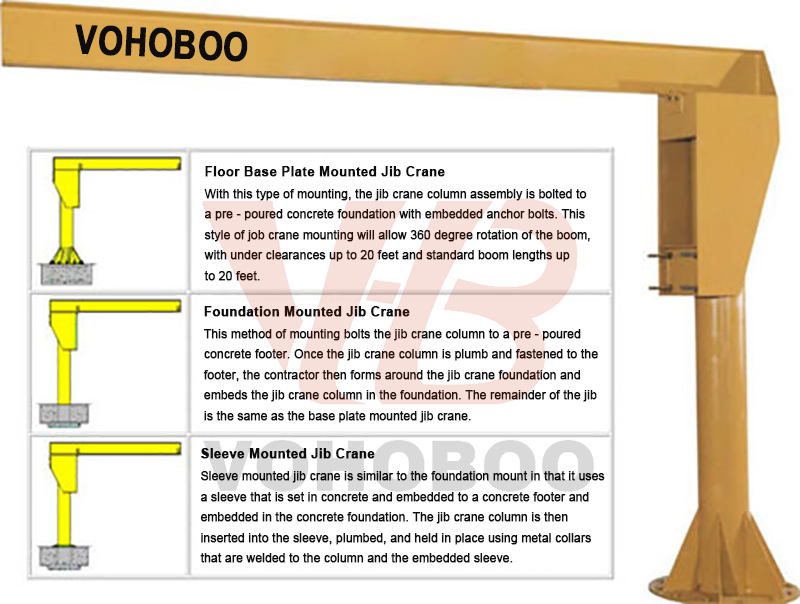

Comprehensive Overview of Jib Crane Features and Applications
A jib crane is a versatile and efficient lifting device designed to handle a wide range of material handling tasks in industrial, commercial, and construction environments. It consists of a horizontal arm, known as the jib or boom, that supports a hoist and is mounted to a vertical mast, wall, or other structural support. Jib cranes are widely recognized for their ability to provide localized lifting and movement capabilities without the need for large-scale overhead crane systems. Depending on the model, they can rotate from 180° to 360°, offering flexible and precise load positioning in confined or open spaces.
The typical load capacity of a jib crane ranges from 125 kg to 20 tons, making them suitable for both light-duty assembly work and heavy-duty industrial lifting. The outreach length can vary from 2 meters to over 10 meters, depending on installation requirements. Jib cranes can be categorized into several types, including pillar-mounted (free-standing), wall-mounted, wall-bracket, and articulating arm jib cranes. Each design offers unique advantages: for example, pillar-mounted models provide full 360° rotation and are ideal for standalone applications, while wall-mounted designs save floor space and integrate seamlessly with existing structures.
The main components of a jib crane include the boom (jib arm), mast or column, slewing mechanism, and lifting unit (electric chain hoist, wire rope hoist, or manual chain block). Modern jib cranes are often equipped with electric slewing drives, frequency converters for smooth speed control, and ergonomic push-button control panels or wireless remote controls for enhanced operator safety. The construction is typically made from high-strength steel to ensure durability and stability under heavy loads, with surface treatments such as powder coating or hot-dip galvanizing for corrosion resistance in outdoor or marine environments.
Jib cranes are widely used in workshops, warehouses, production lines, maintenance stations, shipyards, and loading docks. In manufacturing plants, they are often positioned to assist with repetitive lifting operations, reducing operator fatigue and increasing productivity. In shipping and logistics hubs, jib cranes facilitate the loading and unloading of goods with minimal setup time. The compact design allows them to be installed in locations where overhead cranes are impractical, providing a cost-effective alternative for localized lifting needs.
The advantages of jib cranes include ease of installation, low maintenance requirements, high efficiency, and adaptability to various working environments. They can be customized with different lifting speeds, rotation ranges, outreach lengths, and hoist types to meet specific operational needs. Whether used for light assembly work, heavy machinery positioning, or component transfer between workstations, jib cranes deliver reliable and precise lifting performance. Their combination of flexibility, durability, and cost-effectiveness makes them a preferred choice for businesses seeking to optimize material handling operations.
Technical parameter:
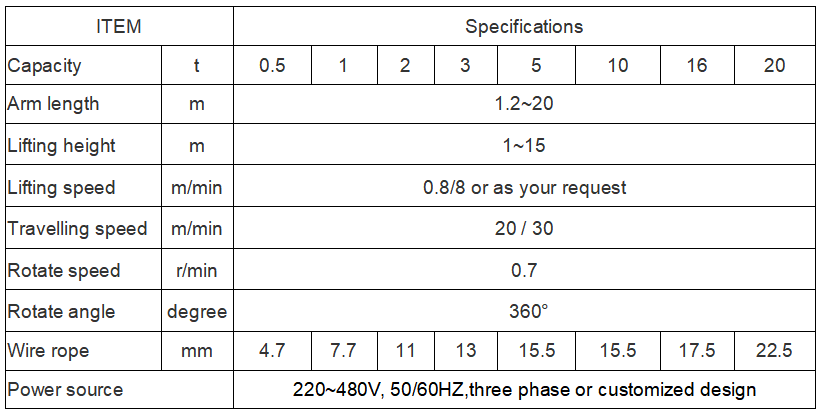
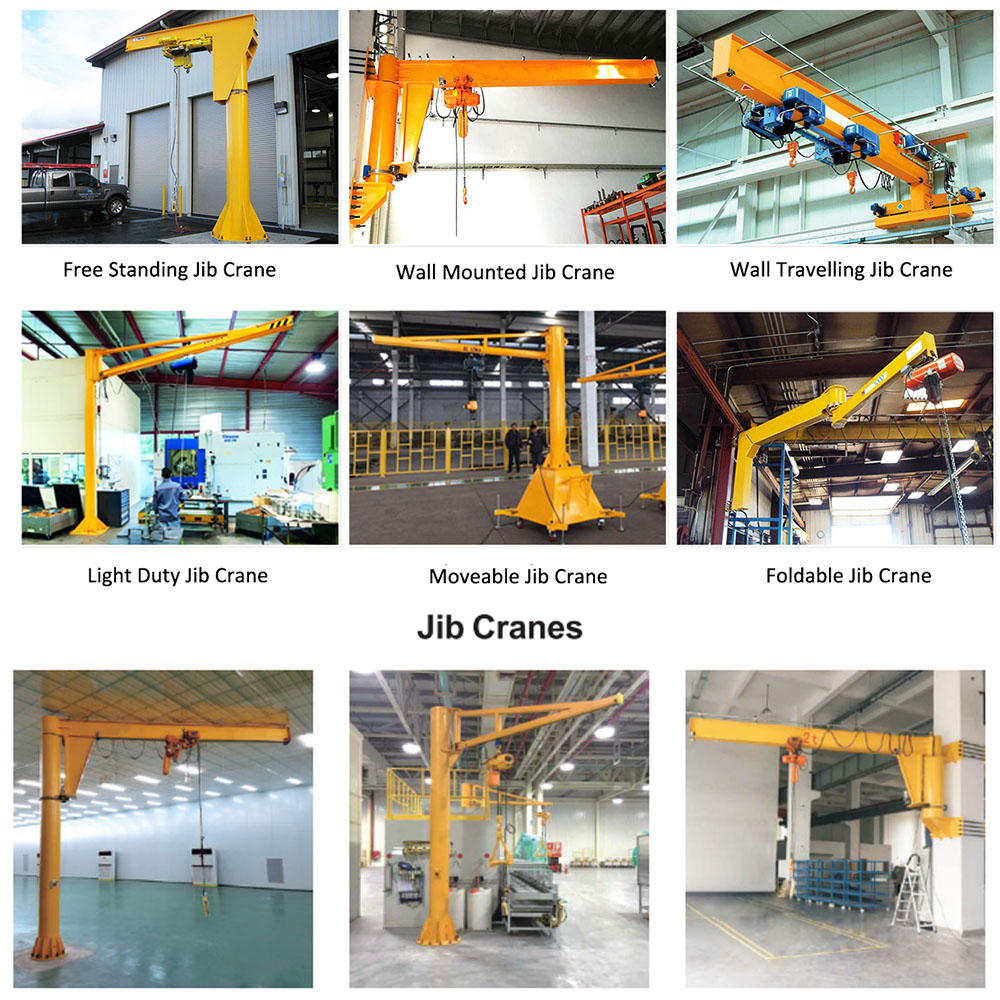
Product Details

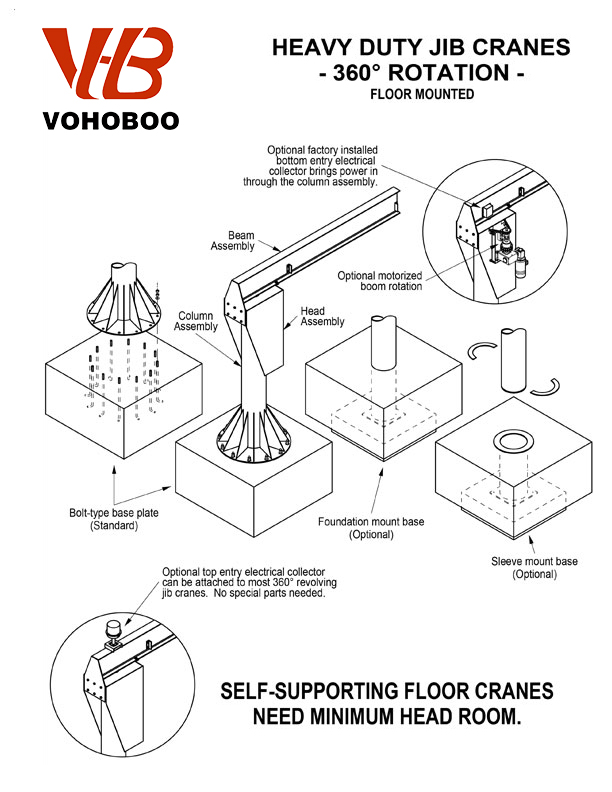
Packing&Delivery
